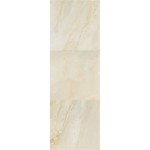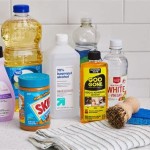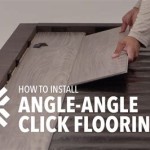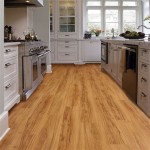Nails for Wood Flooring: Essential Aspects
Installing wood flooring requires careful consideration of the nails used. Choosing the right nails ensures stability, durability, and aesthetic appeal. Here are essential aspects to consider when selecting nails for wood flooring:
Type of Wood Flooring
The type of wood flooring dictates the appropriate nail type. Solid hardwood floors require nails specifically designed for hardwood, while engineered wood floors may use nails or staples. Consult the flooring manufacturer's recommendations for the best option.
Nail Gauge
Nail gauge measures the thickness of the nail. For solid hardwood floors, 16-gauge nails are typically used. Engineered wood floors may use 18- or 19-gauge nails or staples. Thicker nails provide greater holding power, while thinner nails are less noticeable.
Nail Length
Nail length should be sufficient to penetrate the flooring and underlayment into the subfloor. For 3/4-inch-thick solid hardwood flooring, 1 1/2-inch nails are commonly used. Engineered wood floors may require shorter nails, while thicker floors may need longer ones.
Head Style
The head style refers to the shape of the nail head. Sinker nails have a flat head that sits flush with the wood surface, while ring shank nails have a serrated head that provides additional grip. Ring shank nails are often preferred for wood flooring due to their superior holding power.
Finish
The nail finish affects its appearance and corrosion resistance. Bright nails are uncoated and have a silver color. Hot-dipped galvanized nails are coated with zinc to prevent rust and corrosion. Consider the aesthetic preferences and the environment where the flooring is installed.
Nail Pattern
The nail pattern determines the spacing and positioning of nails. Herringbone patterns are common for hardwood floors, while parallel patterns are used for engineered wood floors. Follow the flooring manufacturer's recommendations for the proper nail pattern.
Additional Considerations
In addition to the essential aspects mentioned above, consider the following factors when selecting nails for wood flooring:
- Using a nail gun can save time and effort during installation.
- Pre-drilling holes can prevent nail splitting, especially in hardwood floors.
- Countersinking nails below the wood surface gives a cleaner look.
- Filling nail holes with wood putty or color-matched caulk ensures a seamless finish.
By carefully considering the essential aspects discussed above, you can choose the right nails for your wood flooring project, ensuring a beautiful, durable, and long-lasting installation.

How Many Nails Staples For Hardwood Floor Installation

Fitting Wood Flooring Nail Vs Staples And Beyond Blog

How To Fix A Squeaky Hardwood Floor Stanley Tools

Cleat Nails Vs Staples An Overview Hardwood Floors

Masonry Nails In Wood Floor For Old Look Flooring Hardwood Floors

Which Method Should I Use To Install My Engineered Wood Floor Tesoro Woods

Fitting Wood Flooring Onto Existing Floorboards British Hardwoods Blog

Secret Nailing Into Joists Or Chipboard Flooring

Passive Refinishing Solves A Tennessee Conundrum Rosebud Floors

Square Nail Indents To Distress Hardwood Floors Distressed Wood
Related Posts








